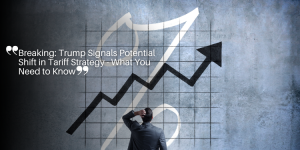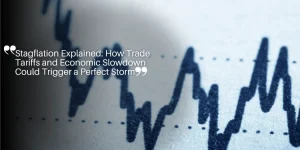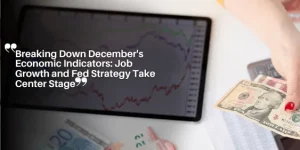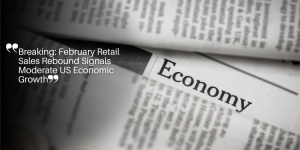Breaking: Atlanta Fed Projects 2.8% GDP Decline, Signals Severe US Economic Contraction
Unsettling GDPNow Model Projections
The Atlanta Federal Reserve’s GDPNow model has raised alarms with its latest forecast, pointing to a 2.8% annualized slump in the US GDP for the first quarter of 2025.
This dramatic projection marks the most severe economic contraction since the pandemic era, unsettling economists and market watchers alike.
The previous estimate, a 1.8% decline, was already concerning. The sharp downward revision underscores how quickly and intensely economic conditions have deteriorated.
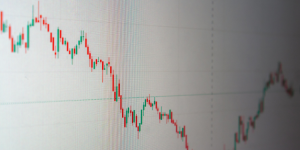
The Root of the Contraction
At the heart of this forecast is a myriad of compounding factors.
Erratic economic policies, particularly those involving snap tariffs and protectionist threats, have contributed significantly to the downturn.
These unpredictably imposed tariffs created a cloud of uncertainty, disrupting trade flows and igniting fears of broader economic instability.
The effect has been an overall erosion of confidence among businesses and consumers.
Impact on Key Economic Indicators
| 📊 Indicator | Before | After (Impact) |
|---|---|---|
| 📉 Consumer Confidence | Stable and optimistic | Lowest level since November 2022 |
| 🛍️ Retail Sales | Steady growth | Signs of weakness |
| 🏭 Industrial Production | Consistent performance | Weakening signs |
| 💸 Trade Deficit | Moderate levels | Record-breaking due to tariffs |
A Historical Comparison
The last time the economy experienced such a steep decline was during the initial waves of the COVID-19 pandemic.
Back then, unprecedented lockdowns and abrupt halts in business activities caused a sudden and dramatic fall in GDP.
The current situation, however, stems from a series of human-made policy decisions rather than an unavoidable health crisis.
This comparison highlights how policy can profoundly influence economic outcomes.
Experts Remain Cautious 🤔
While the GDPNow model’s projections are alarming, most economists are adopting a cautious outlook.
They acknowledge the revised forecasts but are not fully convinced of an imminent recession.
Bloomberg’s recent survey indicated a downward adjustment in growth expectations for both the first quarter and the entirety of 2025.
Nevertheless, many experts believe that while a significant contraction may be averted, growth will remain subdued. 📉
Conclusion and Transition 🔄
The Atlanta Fed’s projections have undoubtedly cast a shadow on the economic outlook for the upcoming months.
With consumer confidence waning and key indicators showing signs of strain, navigating through the first quarter will be challenging.
As we move forward, it’s essential to understand the external pressures, particularly the impact of trade policies, which have further compounded economic uncertainty.
This deeper look at the broader trade environment and its knock-on effects will provide a clearer picture of the challenges ahead. 🌍
Consumer Confidence Takes a Nosedive 📉
A Worrying Sentiment Trend
Recent data paints a picture of declining consumer confidence in the United States.
The University of Michigan’s consumer sentiment index has plummeted to its lowest level since November 2022.
In March 2025, the index fell to 57 points from 64.7 in February, showcasing a substantial drop.
This decrease underscores growing concerns among consumers about their financial situations and the broader economic landscape. 💸
Surprising Consensus Across Political Affiliations 🗳️
One of the most striking aspects of this data is the broad consensus across political affiliations.
Traditionally, consumer sentiment can vary significantly depending on political leanings. However, this month’s decline reflects a unanimous pessimism.
Republicans, Democrats, and independents alike expressed deteriorating expectations regarding their personal finances, business conditions, and unemployment.
This convergence signals a unified sense of economic gloom permeating the country. 🌧️
Continual Decline Noted by The Conference Board 📊
Further affirming this downtrend, The Conference Board has reported the fourth consecutive monthly decline in consumer confidence.
Their Expectations Index, which gauges consumers’ short-term views on income, business, and labor market conditions, has fallen dramatically.
It now stands at 65.2, its lowest level in 12 years and well below the threshold of 80, which is typically indicative of an impending recession.
This decline points to a pervasive pessimism about the future economic conditions, bolstering concerns about the overall economic outlook. ⚠️
Impact on Broader Economic Indicators 📉
This decline in consumer confidence is not just an abstract sentiment but has real economic implications.
Decreased confidence typically leads to reduced consumer spending, as individuals become more cautious about their finances.
Consumer spending is a crucial factor driving economic growth in the US economy, and this trend could exacerbate the current economic downturn.
As we have seen, the Atlanta Fed’s latest GDP forecast indicates a significant contraction.
With consumer confidence waning, there is a risk of a feedback loop where declining confidence leads to lower spending, which in turn further dampens economic growth prospects. 🔄
Impact of Trade Policies 🌐
The trade policies in place are a significant factor causing ongoing economic uncertainty.
Snap tariffs and protectionist threats have created an unstable environment for businesses and hindered economic growth, both domestically and internationally. 📉
Economic Uncertainty and Tariff Policies 💡
The erratic implementation of tariffs has introduced a high level of unpredictability in the market.
Companies are uncertain about future costs and the stability of their supply chains. This uncertainty translates to cautious investment and hiring decisions.
Trade policies under the current administration have had a pronounced impact on economic stability.
The unpredictability of snap tariffs has led businesses to hasten imports, creating spikes in import levels followed by sharp declines.
This erratic pattern disrupts normal economic activity and planning.
Record-Breaking Trade Deficits 📊
The January and February trade deficits have reached unprecedented levels.
Companies are rushing to import goods ahead of potential new tariffs, thus artificially inflating deficit figures.
This front-loading of imports means that trade policies intended to encourage domestic production are having the opposite effect.
Instead of reducing dependence on foreign goods, the policies are temporarily increasing it, leading to record-breaking deficits in the early months of the year. 📉
The U.S. trade deficit for these months has been detrimental to the GDP.
The economic data point out that the deficit detracts from GDP, meaning it negatively affects overall economic growth.
As the deficit widens, the overall economic health declines, furthering a cycle of economic instability. 🔻
Ripple Effects on Neighboring Economies
These U.S. trade policies do not just affect the domestic economy; they have a ripple effect on neighboring economies as well.
Canada’s economic growth, for example, has stalled amid fears of U.S. tariffs.
The initial growth observed at the beginning of the year has come to a halt as uncertainties surrounding trade policies loom large.
As these tariffs come into play, neighboring countries are forced to rethink their economic partnerships and trade routes.
Canada’s economy, which is closely tied to that of the United States, has suffered direct hits. Businesses there face similar unpredictability, leading to reduced investments and slowed economic growth.
The compounded effect of these policies and the growing trade deficits is an alarming signal of broader economic challenges ahead.
This environment of uncertainty impacts consumer and business confidence, further reducing spending and economic activity.
Moving forward, the interconnected nature of modern economies means that policy decisions in one country can have wide-ranging impacts on global economic health.
These policies not only reshape the landscape domestically, but also dictate the tempo of economic interactions on an international scale.
Economic Outlook and Expert Analysis
Economic analysts are approaching the recent negative trends with a cautious but wary eye.
Despite the alarming indicator from the Atlanta Federal Reserve’s GDPNow model, which predicted a 2.8% annualized GDP decline for Q1 2025, experts are hesitant to forecast a contraction just yet.
Downgraded Growth Forecasts 📉
A Bloomberg survey recently highlighted this caution among economists.
The survey illustrated that although growth projections for both Q1 and the full year 2025 have been significantly revised downward, a full-blown contraction is not the consensus expectation.
For Q1, growth projections have been downgraded from an earlier 2.2% to a modest 1.2%. For the full year, the median forecast has fallen from 2.3% to 2%. 🔽
Risks of Recession ⚠️
However, the risk of slipping into a recession has undeniably grown.
There is rising acknowledgment among analysts that the odds of experiencing a recession have escalated, with current estimates placing the probability at over one-third.
This represents a significant jump in concerns compared to the beginning of the year when such forecasts were far more optimistic. 📉
The drive toward protectionist economic policies, particularly the erratic tariffs, has injected significant uncertainty into the economic environment.
This uncertainty has sown caution among businesses and consumers alike, potentially dampening spending and investment, which are critical for growth. 💼
Impact on Trade and Employment 💼
The tariff-induced trade deficits have further complicated the outlook.
As companies anticipated new taxes, they rushed imports earlier in the year, setting records in trade deficits for January and February.
This moved GDP numbers downwards and has placed more pressure on domestic production and employment. 📉
The knock-on effects on neighboring economies, especially Canada, which has seen its growth stall, cannot be ignored.
Analysts are closely watching how these interlinked economies react to ongoing trade tensions and how this influences the broader economic landscape. 🌍
Consumer and Business Confidence 📊
Consumer confidence indices from both the University of Michigan and The Conference Board further underscore the shakiness of the current economic environment.
Persistent declines in consumer sentiment hint at reduced future consumer spending, a major pillar of economic activity.
A more cautious consumer base can significantly restrain growth. 😟
In essence, while most economists manage a cautiously optimistic stance that Q1 2025 might avoid outright contraction, the considerable downgrades in growth projections, combined with volatile trade environments and eroded consumer confidence, signify that the economic landscape for 2025 will be fraught with challenges.
The risk of entering a recession is worryingly palpable, and this sentiment is shared widely among experts.
Moving forward, the focus will naturally shift towards how ongoing policies and external conditions will continue to shape the economic environment and the potential steps to mitigate these risks. 🌐



